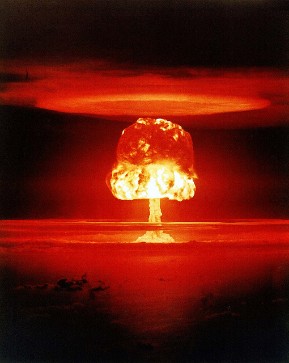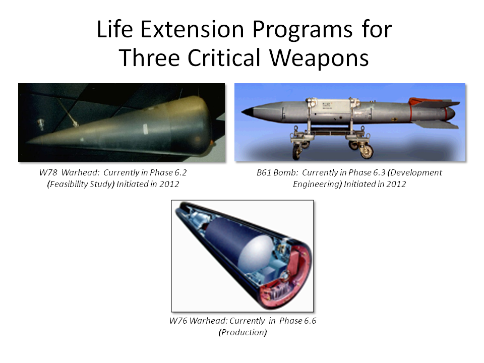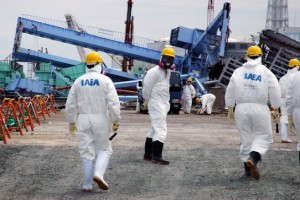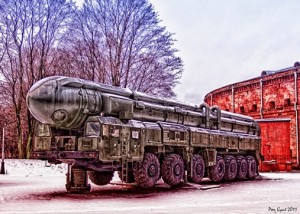 Official CTBTO photo.
Official CTBTO photo.
5 Reasons Why Nuclear Weapons Are Still Relevant Today
The Cold War has ended, and nuclear stockpiles have steadily decreased worldwide, (with a few notable exceptions). The Nation has seen a loss in interest with regards to nuclear weapons from think tanks to academia, and it has taken a back-seat priority in governmental policy. This begs the question of why nuclear weapons remain relevant today.
The Generation Prague conference, held Thursday, July 9 at the U.S. Department of State, provided several reasons why this field is still of great importance, and why Gen Y and Millennials should work to create a grassroots resurgence of interest in the nuclear weapons realm.
1. The danger of nuclear weapons is a shared danger, worldwide.
If nuclear weapons get into the hands of terrorists, the rules of nuclear deterrence no longer apply. Terrorists are non-state actors and are dispersed worldwide. Therefore, if the United States is attacked by a terrorist with a nuclear weapon, there would be no way to retaliate with nuclear capability since there would be no specific state to target.
The world is resultantly only as strong as the weakest link worldwide –which is an unsettling thought. Countries with nuclear weapons such as Pakistan are currently battling extremist insurgencies with Al-Qaeda remnants infiltrating the country from Afghanistan. If these weapons of mass destruction were to fall into the wrong hands, it would become an international security crisis. Steps need to be taken to provide for the security of these weapons, in addition to preventing nuclear proliferation.
2. The Cold War is over, but the ash and trash is still with us.
In his April 5, 2009 speech in Prague, President Obama declared, “as long as nuclear weapons exist, the United States will maintain a stockpile to deter them.” However, 60% of the country from ages 18-34 believe that we should reduce our nuclear arsenal. These are two very conflicting policies, and the only way to reconcile them is through scientific and technological innovation.
Lieutenant General Klotz, director of the National Nuclear Security Administration (NNSA), provided an example of bridging these two differing policies by referencing the B61 life extension program. The program worked to reduce the number of B61 gravity nuclear bomb models from 4 to 1, allowing the U.S. to retire the B83 weapon. Innovation such as this is needed, particularly as stockpiles dwindle, in order to maintain a modern stockpile (these stockpiles were produced over 30 years ago) while at the same time reducing it to the lowest possible for national security needs.
3. Future treaties will require increasingly sophisticated verification technology.
The new START treaty provided for some innovation in on-site inspections. However, as rogue nations such as Iran attempt to acquire nuclear weapons capabilities, it’s clear that more sophisticated monitoring technologies must be developed in order to detect illicit activities. Verification will be essential to enforce the upcoming Iranian nuclear deal on July 20th,since any illicit activities or “breakouts” detected thereafter could result in major repercussions for Iran.
Rose Gottemoeller, Under Secretary of State for Arms Control, cited the winner of last year’s challenge competition in which students provided proposals to enhance future arms control inspections. The winner was a student who used visible light communication technology for GPS navigation in large facilities. This provides an enormous advantage for inspectors since these nuclear facilities are typically very large and inspections are timed. Technology such as this will be vital to ensure proper verification of nuclear treaties in the future.
4. Climate change will become even more real if there’s a “nuclear winter.”
While a nuclear attack might target a nation’s military infrastructure or population centers, the assault could inflict massive harm to Earth’s atmosphere. If nuclear weapons are used and enough ash from burning cities and forests enters the atmosphere, this could create a shield preventing sunlight from reaching the Earth, creating noontime darkness and blocking photosynthesis for plants, reducing temperatures, and potentially creating summer snowstorms with no actual “summer”. Everything should be done to ensure that these nuclear weapons are never used and serve, rather, as a deterrent.
5. We don’t fully understand our adversaries, who have nuclear weapons.
Admiral Haney, commander of U.S. strategic command, advised the Untied States to gain a deeper understanding of our adversaries, since some of these adversaries are increasing their nuclear capabilities. Pakistan and Iran continue to develop their intercontinental ballistic missiles (ICBM). Russia is modernizing their arsenal and developing air-launch cruise missiles with deployments in Japan, Guam, and the West coast of the U.S. China continues to modernize its arsenal as well and enhance their ICBM capabilities. North Korea not only has ambitions to develop nuclear weapons but also to increase proliferation of these weapons.
Admiral Haney advised the U.S. to continue to engage in frank discussions with our allies in order to promote nuclear security efforts and thwart any risks of potential nuclear conflict. Understanding our adversaries will be key to ensuring safety for the international community.
For further reading on nuclear security, please see ASP’s “The 21st Century Nuclear Arsenal.”
Theresa Shaffer is a nuclear security researcher and intern at the American Security Project. She is a recent graduate of the University of North Texas with degrees in International Studies and French. You can follow her on twitter here: Theresa Shaffer











[…] 5 Reasons Why Nuclear Weapons Are Still Relevant Today […]